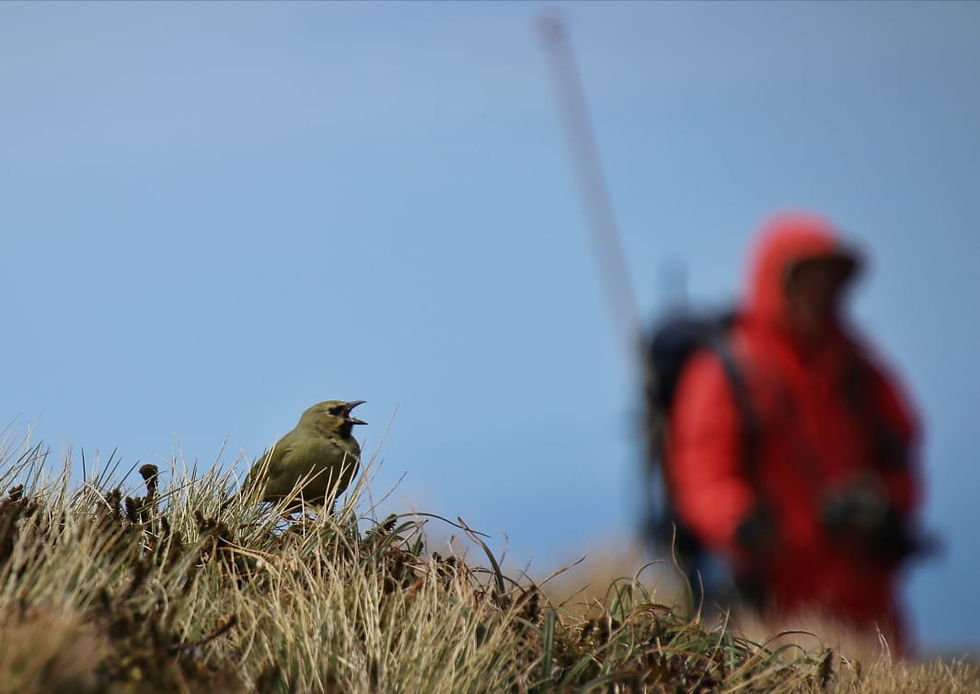The Bunty Hunters
- Laura Beasley
- Dec 13, 2018
- 2 min read
Updated: Dec 14, 2018
Blog by Michelle Jones

During this years takeover, as we started our year on Gough, we were tasked with trying to monitor the breeding success of the Gough bunting, an endemic land bird that’s under threat from invasive mice predating on their eggs and chicks. Monitoring of breeding success had not been done for the Gough bunting since 2009, so we set out to get a better understanding of how they are doing prior to the mouse eradication. Once the eradication is complete we’ll be able to compare this data with their breeding success when there’s no mice present on Gough Island – giving us a measure of the impact of the eradication.

At first this seemed like a very daunting task, as the three of us are used to working with large seabirds, which either nest on the surface and are very easy to find, or make burrows in the ground which are very easy to fall into. Whereas Buntings are tiny by comparison and have very cryptic nests-hidden under bogferns, grass or just in a small hollow in a rock face.
This monitoring required detective style work, closely stalking individuals.

Like many songbirds, female buntings incubate their eggs whilst the male goes off to forage. She will briefly leave the nest to beg for food from the male, he feeds her and she might forage a bit herself before dashing back to the nest.


We listen carefully for her distinctive begging call and hope to see the exact location where she flies from/flies back to.
Zooming out of the nest from the eggs, these photos show how difficult the nests are to spot!




Once the nest has been located we mark it with a GPS and check the contents of the nest (number of eggs/chicks).



Despite seeming a tall order, this work has been extremely enjoyable for Chris, Alexis and myself. We all set off with binoculars, cameras, notebooks and handheld GPSs (and snacks to keep us going). We constantly stay in communication via handheld radios letting each other know if we can see buntings heading in their direction. Birds can fly a few hundred meters away from their nest site. Suffice to say that we are all getting very fit from running up and down the slopes of Gough chasing buntings!

We look forward to reporting on the progress of these nests throughout their season!
To keep up to date with all the latest news please follow our Gough Island Facebook and Twitter pages, or contact us on the email below:
If you would like to support our efforts to save the Critically Endangered Tristan albatross and Gough bunting, please get in touch or you can donate using our online form .
Acknowledgement The Gough Island Restoration Programme is being carried out by the RSPB in partnership with Tristan da Cunha , BirdLife South Africa and the Department of Environmental Affairs in South Africa and Island Conservation . The programme is part-funded by the RSPB, the UK Government, the National Fish and Wildlife Foundation and other generous individuals and organisations.



Comments